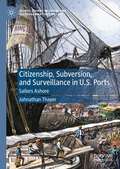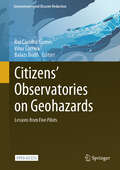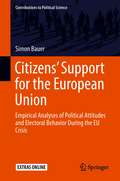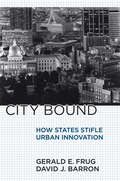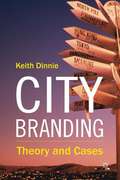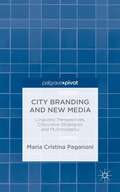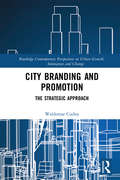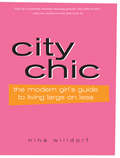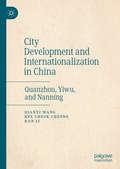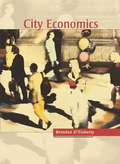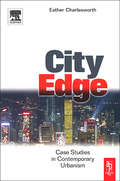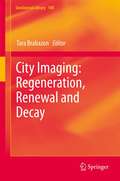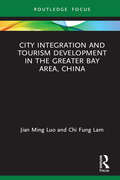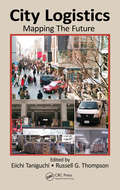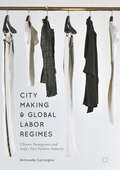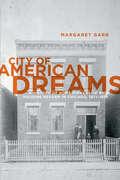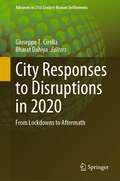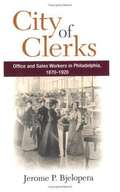- Table View
- List View
Citizenship, Subversion, and Surveillance in U.S. Ports: Sailors Ashore (Global Studies in Social and Cultural Maritime History)
by Johnathan ThayerThis book argues first, that the forces of industrialization that transformed ship technology simultaneously transformed the working-class lives of merchant seamen, intensifying class conflict and producing collective networks of subversion and resistance within the urban borderland spaces of sailortowns in which sailors fought to maintain control over their mobility, agency, and rights. Second, that given their social, cultural, economic, geographic, and legal marginalization, merchant seamen have occupied essential roles at the parameters of US urban, legal, labor, immigration, and wartime history. Third, that the constellation of these histories, embedded in the encounters and negotiations that merchant seamen provoked along the nation’s coastlines and sailortowns, collectively represents a unique and essential perspective on the history of US citizenship.
Citizens’ Observatories on Geohazards: Lessons from Five Pilots (Geoenvironmental Disaster Reduction)
by Rui Carrilho Gomes Vítor Correia Balazs BodóThis open access book shows how citizens' involvement in geohazard risks prevention can strengthen regional and national risk management systems, to demonstrate a new form of engagement between civil society and local authorities. The lessons learned in in this book, where the local communities were engaged to actively participate in risk preparedness and monitoring and incorporate local capacities into risk management systems, are reported. A cooperation and resource platform on geohazards risk assessment, preparedness, mitigation, and prevention was used as interface between the citizens and the risk management system. A more efficient uptake of Copernicus data, products, and services on regional level is discussed, to improve geohazard risk prevention and resilience to natural disasters. Recommendations for the creation of future observatories in response to the widest range of hazards (both natural and human-induced) in Europe and in the world are provided.
Citizens’ Support for the European Union: Empirical Analyses of Political Attitudes and Electoral Behavior During the EU Crisis (Contributions to Political Science)
by Simon BauerThis book offers a comprehensive analysis of the determinants of EU support between 2006 and 2015, and of electoral behavior during the European Parliament elections. In light of the Eurozone financial and debt crisis, it also examines how political and economic turbulences have affected EU citizens’ stance on democracy and their support for EU institutions. It explores measures taken in the context of the Euro crisis management and the reactions of EU citizens, in order to shed new light on the determinants and developments of EU support. The author highlights the heterogeneity of the developments between the member states and identifies social, political, and economic facets of the crisis that have changed the ways citizens form their political attitudes towards the EU. The book delivers a profound account of the Euro crisis, integrating approaches from political economy, psychology, sociology, and public opinion research. It will appeal to scholars and anyone interested in learning more about the declining citizen support in the EU and the heterogeneous developments in the member states, which may significantly endanger the long-term existence of the European Union.
Citizen’s Income and Welfare Regimes in Latin America: From Cash Transfers to Rights (Exploring the Basic Income Guarantee)
by Rubén Lo VuoloSocial protection systems in Latin America developed in a fragmented manner, offering varying access to benefits and benefit levels to population groups. In the context of widespread informal and precarious work, social insurance institutions could only provide limited coverage. In this context, progress toward a Citizen's Income policy in Latin America depends on the possibility of reappraising its importance for an integrated institutional system which promotes the empowerment and economic independence of people. A Citizen's Income policy is not only a cash transfer to alleviate poverty or a basic income for food. It is a basic right to improve democracy and encourage a more autonomous development of people living in profoundly unequal societies.
Citrus Genetics, Breeding and Biotechnology
by Iqrar Ahmad KhanThis book provides a comprehensive review of citrus breeding, including relevant genetics, molecular biology and biotechnology.
City Bound
by Gerald E. Frug David J. BarronMany major American cities are defying the conventional wisdom that suburbs are the communities of the future. But as these urban centers prosper, they increasingly confront significant constraints. In City Bound, Gerald E. Frug and David J. Barron address these limits in a new way. Based on a study of the differing legal structures of Boston, New York, Atlanta, Chicago, Denver, San Francisco, and Seattle, City Bound explores how state law determines what cities can and cannot do to raise revenue, control land use, and improve city schools. Frug and Barron show that state law can make it much easier for cities to pursue a global-city or a tourist-city agenda than to respond to the needs of middle-class residents or to pursue regional alliances. But they also explain that state law is often so outdated, and so rooted in an unjustified distrust of local decision making, that the legal process makes it hard for successful cities to develop and implement any coherent vision of their future. Their book calls not for local autonomy but for a new structure of state-local relations that would enable cities to take the lead in charting the future course of urban development. It should be of interest to everyone who cares about the future of American cities, whether political scientists, planners, architects, lawyers, or simply citizens.
City Branding
by Keith DinnieThe practice of city branding is being adopted by increasing numbers of city authorities around the world and it is having a direct impact on public and private sector practice. The author captures this emerging phenomenon in a way that blends a solid theoretical and conceptual underpinning together with relevant real life cases.
City Branding and New Media: Linguistic Perspectives, Discursive Strategies and Multimodality
by Maria Cristina PaganoniThis book explores city branding in the public sector as an aspect of e-governance from a privileged linguistic, discursive and semiotic perspective. It analyses how local administrations and public bodies engage their stakeholders by addressing key issues such as active citizenship, social inclusion and promotion of cultural heritage and events.
City Branding and Promotion: The Strategic Approach (Routledge Contemporary Perspectives on Urban Growth, Innovation and Change)
by Waldemar CudnyThis book explores theoretical concepts of strategic promotion and place branding in cities. It outlines the issues associated with strategic management of urban territories and highlights various types of development strategies that seek to encourage socio-economic development, growth and city branding, particularly within the tourism industry. It examines the rules and methods for analysing the current branding of a city and how new branding and promotion strategies are created. Through a range of international examples the book considers the missions, aims and implementation of branding strategies and the importance of monitoring and controlling procedures. The first part of the book provides theoretical context, followed by a detailed exploration of the promotional and branding strategy prepared for the city of Tomaszów Mazowiecki in Poland. This book provides the reader with theoretical and practical insights on city branding and will appeal to scholars and students in urban studies, geography, tourism, management and economics.
City Chic
by Nina Willdorf<p><em>Live the luxe life on less</em></p><p>You're a Modern Girl embarking on a fabulous life in the city, working hard and playing even harder. Money may be an object, but you refuse to let it be an obstacle. That's because what you may lack in funds you make up for in daring and desire. Completely revised with more tips and tricks than ever, <strong>City Chic</strong>is your practical insiders' primer on how to creatively cheat at being chic. From food and drink to personal maintenance, and from fashion to home décor, <strong>City Chic</strong>covers everything a Modern Girl needs to know. </p><ul><li>Big idea decoratingfor small spaces</li><li>Cash-saving culinary tips</li><li>The best websites for scoringdeals</li><li>Go green: save the environment and your checking account</li><li>Maximize your iPod for fullparty potential</li><li>Establish your perfectsignature cocktail</li></ul><p><u>PRAISE FOR CITY CHIC </u></p><p>'<em>City Chic</em>is constantly inventive, amazingly granular, and a blast to read. '<br><strong>Dany Levy, founder/chairman | Daily Candy, Inc. </strong></p><p>'I love the book. If only I'd had it for the past ten years-it would've saved me lots of heartache, bad furniture, and most importantly, money... It gives you license to scrimp and pinch-and makes you feel more empowered to do so. '<br><strong>Gigi Guerra, brand marketing director of Madewell | former editor of Lucky magazine</strong></p><p>'City chicks no longer need to turn tricks or sell dope in order to have a glamorous lifestyle- just read Nina's brilliant book. '<br><strong>Simon Doonan, creative director for Barneys New York | author of Confessions of a Window Dresser </strong></p><p>'Being an 'it' girl has never been about how much cash you had in the bank, and now is the time to embrace your inner recessionista. Willdorf's book proves that being frugal and being fabulous are not mutually exclusive. '<br><strong>Lara Cohen, news director | Us Weekly</strong></p>
City Development and Internationalization in China: Quanzhou, Yiwu, and Nanning
by Ran Li Kee Cheok Cheong Qianyi WangThis book explores how history shapes city development, assesses the role of government at national and sub-national levels through case studies of three secondary cities, Quanzhou, Yiwu and Nannin, and provides a link between city development and internationalization. In doing so, the book highlights alternative paths to development and internationalization that have received little attention in mainstream discussions.The case study approach in the book allows for deep insights into the development and internationalization of cities, linking development to historical, social, institutional and economic factors—narratives that bridge the two themes of city development and internationalization. Strong analyses is accompanied by photographs and charts that allow the reader to learn about Chinese cities other than the major urban areas in China, garner better understanding of the role of the Chinese state, and appreciate the relevance of “city-specific assets” for city planning.
City Economics
by Brendan O'FlahertyThis introductory but innovative textbook on the economics of cities is aimed at students of urban and regional policy as well as of undergraduate economics. It deals with standard topics, including automobiles, mass transit, pollution, housing, and education but it also discusses non-standard topics such as segregation, water supply, sewers, garbage, fire prevention, housing codes, homelessness, crime, illicit drugs, and economic development. Its methods of analysis are primarily verbal, geometric, and arithmetic. The author achieves coherence by showing how the analysis of various topics reinforces one another. Thus, buses can tell us something about schools and optimal tolls about land prices. Brendan O’Flaherty looks at almost everything through the lens of Pareto optimality and potential Pareto optimality—how policies affect people and their well-being, not abstract entities such as cities or the economy or growth or the environment. Such traditionalism leads to radical questions, however: Should cities have police and fire departments? Should tax preferences for home ownership be repealed? Should public schools charge for their services? O’Flaherty also gives serious consideration to such heterodox policies as pay-at-the-pump auto insurance, curb rights for buses, land taxes, marginal cost water pricing, and sidewalk zoning.
City Edge
by Esther CharlesworthThis series of essays outlines a number of case studies from Europe, North America, Australia and Asia and provides first hand accounts of the experiences that planners, architects and politicians have had in reshaping cities. These insights provide a pragmatic assessment of the challenges and constraints posed by changing patterns of urban growth in a broad spectrum of urban environments. The reader will discover, through these multiple voices and views, the diverse forms of global cities, and will have a grasp of where the debate on urban design stands today, and where it may be going in the future.
City Group Hospitality: Fostering Digital Relationships with Guests
by Lynda M. Applegate Gabriele Piccoli Joaquin RodriguezCase
City Imaging: Regeneration, Renewal And Decay (GeoJournal Library #108)
by Tara BrabazonThis book examines the paradoxes, challenges, potential and problems of urban living It understands cities as they are, rather than as they may be marketed or branded. All cities have much in common, yet the differences are important They form the basis of both imaginative policy development and productive experiences of urban life. The phrase 'city imaging' is often used in public discourse, but rarely defined It refers to the ways that particular cities are branded and marketed. It is based on the assumption that urban representations can be transformed to develop tourism and attract businesses and in-demand workers to one city in preference to another. However, such a strategy is imprecise. History, subjectivity, bias and prejudice are difficult to temper to the needs of either economic development or social justice The taste, smell, sounds and architecture of a place all combine to construct the image of a city. For researchers, policy makers, activists and citizens, the challenge is to use or transform this image. The objective of this book is to help the reader define, understand and apply this process After a war on terror, a credit crunch and a recession, cities still do matter. Even as the de-territorialization of the worldwide web enables the free flow of money, music and ideas across national borders, cities remain important. City Imaging: Regeneration, Renewal, Decay surveys the iconography of urbanity and explores what happens when branding is emphasized over living.
City Integration and Tourism Development in the Greater Bay Area, China (Routledge Focus on Tourism and Hospitality Research)
by Jian Ming Luo Chi Fung LamCity Integration and Tourism Development in the Greater Bay Area, China explores the tourism development related issues of city integration in the Greater Bay Area (GBA). This book starts with a general introduction to the background of the Greater Bay Area in China. Chapter 2 is a historical review, focusing on tourism development in GBA. Chapter 3 introduces the concept of city integration and the profile of GBA. Chapter 4 discusses the effect of city integration on tourism development. Chapter 5 describes the trends of city integration and tourism. Lastly, Chapter 6 is a case study with recommendations for city destination management. This book is a valuable resource for social science researchers and those in related fields, such as city planners and tourism officers. This book is recommend reading for advanced undergraduate or postgraduate students of urban tourism, tourism economics, and tourism management.
City Logistics: Mapping The Future
by Eiichi Taniguchi Russell G. ThompsonCity Logistics: Mapping The Future examines the key concepts of city logistics along with the associated implementation issues, methodologies, and policy measures. Chronicling the growth of city logistics as a discipline and how planning and policy have improved practice over the last ten years, it details the technologies, policies, and plans that
City Making and Global Labor Regimes: Chinese Immigrants and Italy's Fast Fashion Industry
by Antonella CeccagnoThis book investigates the success story of the fast fashion industry--mainly owned by Chinese migrants--in Prato, Italy. It outlines how Prato has become the center of a value chain stretching from suppliers in China and Turkey all the way to buyers in Europe. Despite this, a policy attacking Chinese entrepreneurship has been devised and implemented in Prato. This volume analyzes said policy against the crisis of Prato's textile industry. Based on the author's 15 years of fieldwork in Prato, the book sheds light on the entangled processes of city making and the restructuring processes linked to capital accumulation by tackling issues of governance, territory, migration, division of labor, labor mobility, housing, and human rights.
City Of American Dreams: A History Of Home Ownership And Housing Reform In Chicago, 1871-1919
by Margaret GarbIn this vivid portrait of life in Chicago in the fifty years after the Civil War, Margaret Garb traces the history of the American celebration of home ownership. As the nation moved from an agrarian to an industrialized urban society, the competing visions of capitalists, reformers, and immigrants turned the urban landscape into a testing ground for American values. Neither a natural progression nor an inevitable outcome, the ideal of home ownership emerged from the struggles of industrializing cities. Garb skillfully narrates these struggles, showing how the American infatuation with home ownership left the nation's cities sharply divided along class and racial lines. <p><p> Based on research of real estate markets, housing and health reform, and ordinary homeowners—African American and white, affluent and working class—City of American Dreams provides a richly detailed picture of life in one of America's great urban centers. Garb shows that the pursuit of a single-family house set on a tidy yard, commonly seen as the very essence of the American dream, resulted from clashes of interests and decades of struggle.
City Power: Urban Governance in a Global Age
by Richard SchraggerReigning theories of urban power suggest that in a world dominated by footloose transnational capital, cities have little capacity to effect social change. In City Power, Richard C. Schragger challenges the existing assumptions, arguing that cities can govern, but only if we let them. In the past decade, city leaders across the country have raised the minimum wage, expanded social services, and engaged in social welfare redistribution. These cities have not suffered capital flight. In fact, many are experiencing an economic renaissance. Schragger argues that city policies are not limited by the demands of mobile capital, but instead by constitutional restraints serving the interests of state and federal officials. Maintaining weak cities is a political choice. In this new era of global capital, the power of cities is more relevant to citizen well-being than ever before. A dynamic vision of city politics for our new urban age, City Power reveals how cities can govern despite these constitutional limits - and why we should want them to.
City Responses to Disruptions in 2020: From Lockdowns to Aftermath (Advances in 21st Century Human Settlements)
by Bharat Dahiya Giuseppe T. CirellaThis book presents the integrating of economics and urban geography to create a framework of cooperation around the idea of urban economic stability. It explores these disciplines through the economic lens and creates a collaborative environment for addressing the global challenges caused by the COVID-19 pandemic and future global shocks. Environmental advocates and proponents of economic growth are increasingly at odds—having looked at the economic impact of the decline of the environment as well as the environmental loss that occurs with unchecked growth and urbanization. The outbreak of the COVID-19 pandemic changed the global scene. The world shook in its foundations, as a number of countries’ lockdown affected not only the global economy but also society and the environment. The global community has seen the negative impact of COVID-19 on our economies. There have been steep declines in gross domestic product, job losses have been in the millions, and people have seen their incomes fall. An unplanned shutdown has taken its toll and has been a shock to the economies of the world. Past shocks and how they have impacted urban economies as well as for how long are core to bettering our understanding of present and future urban economic change. The underlying economic factors that make a shock more damaging to certain economies or industries, as well as understanding these vulnerabilities, help entities recover from economic shocks and allow them to better understand how impacts on individual businesses can be implemented. The pandemic revealed the need to adopt a global development approach, taking into consideration four dimensions: global value chains, debt, digitalization, and the environment. Topics related to the causation and lockdown are explored through a number of case studies from around the world.
City Spaces - Tourist Places
by Tony Griffin Bruce Hayllar Deborah EdwardsOver the last decade, commentaries and research on urban tourism precincts have predominantly focused on: their role in the tourism attractions mix; their physical and functional forms; their economic significance; their role as a catalyst for urban renewal; their evolution and associated development processes; and, perhaps more broadly, their role, locality and function within the context of urban planning. City Spaces – Tourist Places both consolidates and develops the extant knowledge of urban tourism precincts into a coherent research driven contemporary work. It revisits and examines the foundational literature but, more importantly, engages with aspects of precinct development that have previously been either underdeveloped or received only limited consideration, such as the psychological and socio-cultural dimensions of the precinct experience. Written by an international team of contributors it provides the reader with:* A comprehensive analysis of foundational theory and cutting-edge advances in the knowledge of the precinct phenomenon * An examination of previously underdeveloped topics and themes based on contemporary and ground-breaking research * Typological and theoretical frameworks in which to locate precinct form, function and experienceBrilliantly edited to ensure theoretical continuity and coherence City Spaces – Tourist Places is vital reading for anyone involved in the study or planning of urban tourism precincts.
City Year at 30: Toward Long-Term Impact
by Rosabeth Moss Kanter James WeberIn 2018, City Year was a 30 year old nonprofit that recruited and organized teams of young-adult "volunteers" (corps teams) to provide a year of citizen service. It had 3,100 corps members serving in 327 schools located in 28 U.S. cities. In its early decades, City Year provided a variety of services to a variety of organizations in need. Over its most recent decade, City Year had pivoted to having all corps members serve in low-income public schools to keep students on track to graduation in an effort to reduce the nation's high school dropout rate. City Year also worked with partners to help schools transform themselves to better meet the needs of low-income students, and worked with policy makers and elected officials to promote the value of national citizen service. In 2012, City Year launched a Long Term Impact strategy (LTI) aimed at making a substantial improvement in high school graduation rates. The LTI required City Year to transform itself over time to create an organization capable of delivering its ambitious impact strategy. The case explores City Year's history and its efforts to align its organization with its strategy. In March 2018, City Year CEO Michael Brown must examine the state of his organization and its strategy to determine next steps to achieving its LTI goals.
City of Charlotte (A)
by Robert S. KaplanThe city manager's office in Charlotte, North Carolina, is attempting to align and focus the city's programs and operating departments. City managers, working collaboratively with the elected mayor and city council, have identified five strategic themes to make Charlotte the number one city in which to live and work. The themes are community safety, transportation, strong neighborhoods, economic development, and cost-effective government. The city managers, however, find it difficult to get the individual city operating departments to orient their efforts to these five strategic themes. They use the four perspectives of the Balanced Scorecard to develop objectives for the five strategic themes. Once developed, each operating department then has been asked to develop departmental balanced scorecards to communicate and focus their local objectives toward accomplishing the city's strategic priorities. The case describes the development and use of the balanced scorecard as a strategic management system.
City of Clerks: Office and Sales Workers in Philadelphia, 1870-1920
by Jerome P. BjeloperaBelow the middle class managers and professionals yet above the skilled blue-collar workers, sales and office workers occupied an intermediate position in urban America's social structure during the age of smokestacks. In City of Clerks Jerome P. Bjelopera traces the shifting occupational structures and work choices that facilitated the emergence of a white-collar workforce. He describes the educational goals, workplace cultures, leisure activities, and living situations that melded disparate groups of young men and women into a new class of clerks and salespeople. Previously neglected by historians, these young clerks became the backbone of industrial-era businesses and a key to their success. By surveying business school records, census and directory records, and business archival materials, Bjelopera paints a fascinating picture of the lives led by Philadelphia's male and female clerks, both inside and outside the workplace, as they formed their own clubs, affirmed their "whiteness," and even challenged sexual norms. By mapping the relationship between these workers' self-expectations and the shifting demands of their employers, City of Clerks reveals how the notion of "white collar" shifted over half a century. Jerome P. Bjelopera lives and works in the Washington, D. C. metro area. A volume in The Working Class in American History series, edited by James R. Barrett, Alice Kessler-Harris, Nelson Lichtenstein, and David Montgomery
